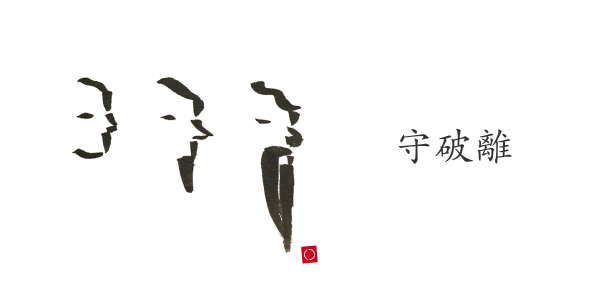A few years ago Jacopo Romei introduced me to a concept describing the stages of mastery borrowed from Aikido: Shuhari. The idea immediately resonated with me and I found using it for quite some time after that, but I noticed I never wrote anything about it.

The three phases of mastery, in the way I converted them for a professional context, are:
- Shu (守), “protect”, “follow the rule”: in this phase the practitioner apply every method, approach or rule that the teacher provides. The rule is followed to the letter. This is where it’s important to follow every detail, even if it seems unimportant, and not deviate from the teachings. This is the phase when a new discipline, approach or technique is learned in its intimacy, step by step. The rules are also repeated over and over in order to assimilate them. This is important not because a specific path is better than the other, but because following a single path till the end is the most efficient way to learn.
- Ha (破), “cut”, “break the rule”: the practitioner has now reached a level where all the rules are well known and it’s possible to break them when necessary. The practitioner is also able to teach other learners, discuss the topic and improve the discipline itself. This is when the rules are questioned, the reason of their existence is put into the spotlight and the foundation becomes visible from the high point of the Shu studies.
- Ri (離), “depart”, “be the rule”: the practitioner now doesn’t just follow the rule, methods and approaches: the practitioner is the rule, transcends the rule. The concepts are so well assimilated that are second nature, and they can be even completely abandoned if the goal requires it. The practitioner is extending the discipline.
It’s a brilliant concept in its simplicity, and you can probably see it happening in any learning context.
It’s interesting to note how could also happen that a Shu learner could think of being at the Ri stage, thus falling in the usual Dunning-Kruger effect, failing to recognize one’s own skill level, thus trying to break the rule too soon. This could happen also at a personal level: sometimes I try to “break” a rule too early, and I have to backtrack because I hadn’t assimilated the rule well enough. I feel it’s normal in the learning process, but it’s important to acknowledge it.
The three steps above are usually associated with a discipline as a whole: they originally referred to a martial art, and they can easily extend to a scientific or professional field. However we can also notice how the fields are a generally accepted definition, but their boundaries aren’t that clearly set, thus in a sense we could see how we repeatedly follow the Shuhari approach even when we learn specific, smaller things. It’s however important to keep in mind that the Shu stage implies a form of learning up to a holistic whole, thus the completeness of learning — whatever it means — it’s implied in the model.
Note also how even at the Ri stage the learning doesn’t stop. ;)
Hat tip to Jacopo, whose original post in Italian is here.